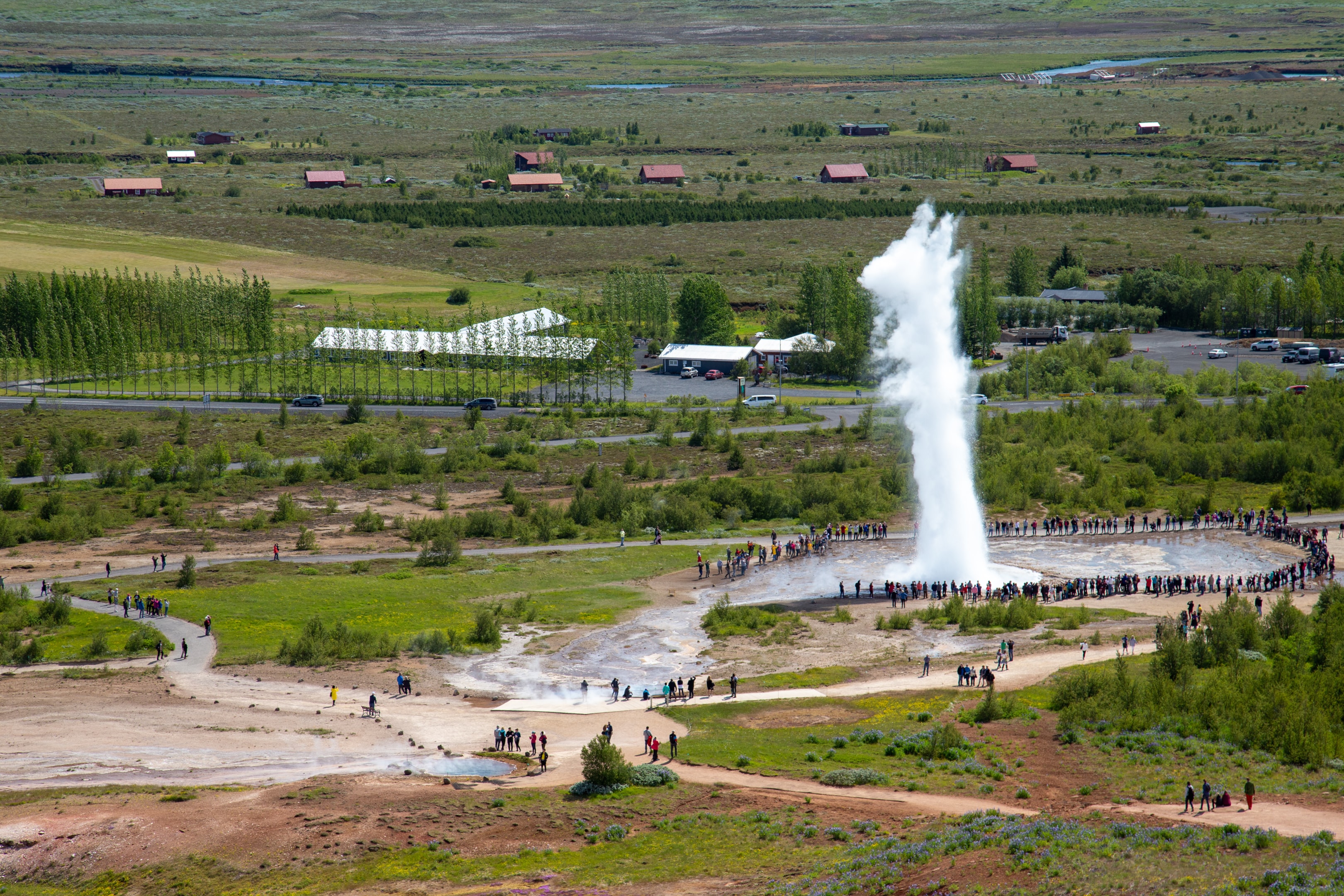Iceland’s otherworldly landscapes attract over 2 million visitors annually, with most facing the same crucial decision: should you explore the famous golden circle or venture along the dramatic south coast? Both routes showcase Iceland’s geological wonders, but they offer completely different experiences, time requirements, and logistical challenges.
The golden circle presents a compact 300-kilometer loop featuring geothermal areas, historic sites, and iconic waterfalls - perfect for travelers with limited time. Meanwhile, the south coast stretches along the ring road, revealing black sand beaches, massive glaciers, and some of iceland’s most photographed attractions across a much longer journey.
This comprehensive comparison will help you choose the route that matches your travel style, available time, and budget. Whether you’re seeking geological wonders in a day trip format or planning an extended adventure through diverse landscapes, understanding these routes’ unique characteristics is essential for crafting your perfect iceland itinerary.
Key Takeaways
- Golden circle is a 300km loop from Reykjavik featuring þingvellir national park, Geysir geothermal area, and gullfoss waterfall - perfect for day trips
- South coast stretches along route 1 showcasing black sand beaches, glaciers, and dramatic waterfalls like seljalandsfoss and Skógafoss
- Golden circle takes 8-9 hours for a day tour while south coast requires 10-14 hours or multiple days to explore properly
- Choose golden circle for shorter trips focusing on geological wonders and historical sites
- Pick south coast for diverse landscapes including glaciers, volcanic beaches, and extensive hiking opportunities
What is the Golden Circle?

The golden circle represents Iceland’s most accessible scenic route - a 190-mile loop starting and ending in Reykjavik via Route 36. This compact circuit connects three world-famous attractions while passing through Iceland’s stunning highland terrain and agricultural valleys.
The route’s popularity stems from its perfect balance of convenience and spectacle. Unlike longer iceland adventures requiring multiple days, the golden circle area delivers maximum impact in a single day trip, making it ideal for travelers with tight schedules or those seeking an introduction to Iceland’s geological wonders.
The circuit includes thingvellir national park, where north american and eurasian tectonic plates dramatically separate; the active Geysir geothermal area with its reliable Strokkur eruptions; and the thundering gullfoss waterfall cascading into a deep canyon. Additional stops like the secret lagoon, Kerið crater, and Friðheimar greenhouse restaurant offer unique experiences for those with extra time.
What is the South Coast?
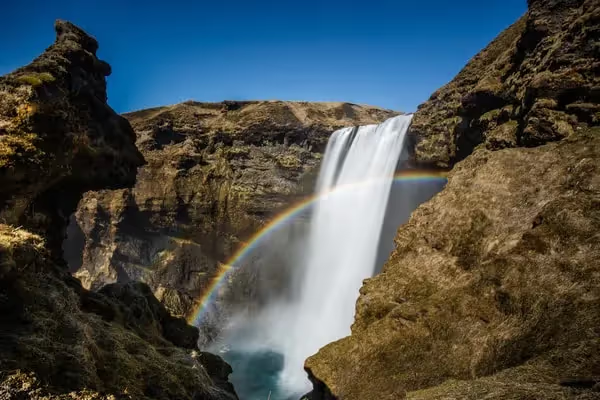
The south coast refers to the spectacular section of Iceland’s ring road extending from Reykjavik toward Höfn and beyond. Unlike the golden circle’s compact loop, this linear route showcases the dramatic interface between Iceland’s volcanic interior and the North Atlantic Ocean across hundreds of kilometers.
This coastal journey reveals landscapes shaped by intense geological forces - vast lava fields created by historic eruptions, outlet glaciers descending from iceland’s largest ice cap, and black sand beaches formed by volcanic activity. The route passes through small towns like Vík while accessing some of Iceland’s most photographed natural attractions.
The south coast’s defining characteristic is its incredible diversity. Within a single journey, travelers experience towering waterfalls, black beach formations, glacier lagoons filled with floating icebergs, and volcanic landscapes that feel almost alien. This variety explains why the route requires significantly more time than the golden circle but rewards visitors with some of the world’s most dramatic coastal scenery.
Key destinations include the charming village of Vík, skaftafell within vatnajökull national park, and the famous jökulsárlón glacier lagoon. The route’s accessibility via paved roads makes these wonders available to all visitors, though weather conditions can impact travel, especially during winter months.
Golden Circle Highlights
Thingvellir National Park

Þingvellir national park discover offers visitors the rare opportunity to stand between two continental plates in the Mid-Atlantic Ridge. This unesco world heritage site showcases the dramatic rift valley where the north american and Eurasian plates separate at approximately 2 centimeters annually, creating visible geological evidence of continental drift.
Beyond its geological significance, Thingvellir holds immense historical importance as the site of Iceland’s first parliament, the Althing, established in 930 AD. The Law Rock (Lögberg) marks where Iceland’s early laws were proclaimed, making this location both geologically and politically foundational to Icelandic identity.
The crystal-clear Silfra fissure within the park offers exceptional snorkeling and diving opportunities in glacial water with over 100-meter visibility. The park’s well-marked trails, free entry, and comprehensive visitor center make it accessible to all travelers while providing educational context about Iceland’s unique position on the Mid-Atlantic Ridge.
Geysir Geothermal Area

The Haukadalur valley houses the original Geysir - the geyser that gave its name to all similar hot water phenomena worldwide. While the Great Geysir now erupts infrequently, the nearby Strokkur geyser delivers reliable performances every 5-10 minutes, shooting hot water 20-30 meters skyward.
This active geothermal field showcases Iceland’s volcanic energy through bubbling mud pools, steaming fumaroles, and colorful mineral deposits. The area serves as an outdoor classroom for understanding geothermal processes, with educational signage explaining how underground heat creates these spectacular surface manifestations.
The site’s excellent facilities include a large visitor center, café, gift shop, and well-maintained viewing areas around the geysers. Free access and ample parking make this stop highly accessible, though crowds can be substantial during peak summer months when tour buses arrive simultaneously.
Gullfoss Waterfall
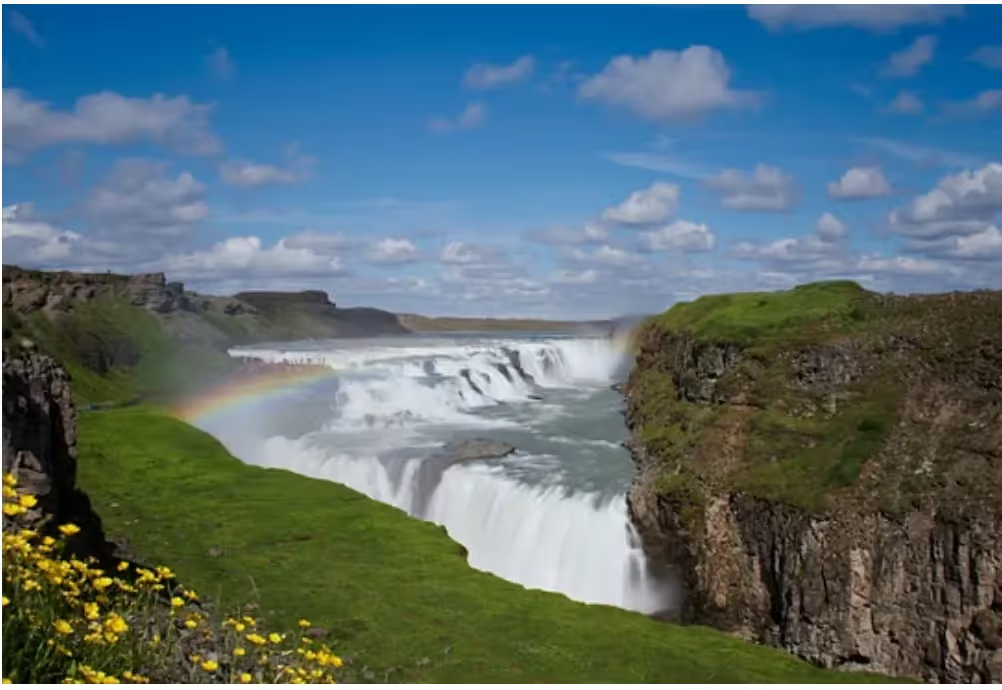
Gullfoss, meaning “Golden Falls,” creates one of Iceland’s most powerful waterfall displays through its distinctive two-tiered drop totaling 32 meters into the Hvítá river canyon. The waterfall’s unique L-shaped configuration and massive water volume - averaging 140 cubic meters per second in summer - generate impressive mist clouds that frequently produce brilliant rainbows on sunny days.
The waterfall holds special significance in Iceland’s environmental history. In the early 20th century, Sigríður Tómasdóttir successfully campaigned against hydroelectric development that would have harnessed Gullfoss for power generation, establishing it as a symbol of Iceland’s conservation movement.
Multiple viewing platforms provide different perspectives of the falls, from close-up spray experiences to panoramic canyon views. The site’s accessibility and dramatic visual impact make it a favorite stops for photographers, while its historical context adds depth beyond mere sightseeing.
South Coast Highlights
Waterfalls

The south coast showcases some of Iceland’s most spectacular beautiful waterfalls, each offering unique characteristics and photo opportunities. Seljalandsfoss waterfall presents visitors with the rare chance to walk behind its 60-meter cascade, creating an immersive experience as water curtains the surrounding landscape. This unique perspective, possible due to the waterfall’s formation and accessible path, provides dramatic photography opportunities especially striking during Iceland’s long summer days.
Skógafoss commands attention through its impressive 60-meter height and 25-meter width, generating powerful mist clouds that create frequent rainbow displays. A challenging staircase of approximately 370 steps leads to the waterfall’s summit, offering panoramic views across the coastal plain and access to the famous Fimmvörðuháls hiking trail connecting to Þórsmörk valley.
Hidden gems like Gljúfrabúi reward adventurous visitors willing to explore beyond the main attractions. This waterfall tucked inside a mossy canyon near Seljalandsfoss requires a short hike and some rock hopping to discover, embodying the spirit of exploration that makes south iceland so rewarding for curious travelers.
Black Sand Beaches and Coastal Features

Reynisfjara black sand beach represents one of the world’s most dramatic non-tropical coastlines, earning recognition from National Geographic for its otherworldly beauty. The beach’s volcanic black sand contrasts sharply with white foam from powerful Atlantic waves, while the towering Reynisdrangar basalt sea stacks rise 66 meters from the ocean like ancient sentinels.
The beach’s hexagonal basalt columns, formed by rapid cooling of lava flows, create natural geometric patterns that inspired Icelandic architecture and folklore. Hálsanefshellir cave provides shelter and unique acoustics, though visitors must exercise extreme caution due to dangerous sneaker waves that can unexpectedly surge far up the black beach.
Dyrhólaey offers elevated perspectives from its 120-meter promontory, featuring a massive natural rock arch and serving as a prime nesting site for thousands of puffins during May through August. The area’s dramatic cliffs and panoramic ocean views make it a favorite among nature photographers and bird enthusiasts.
Diamond beach near jokulsarlon glacier lagoon creates magical scenes where blue-white icebergs wash ashore against volcanic black sand. These ice sculptures, carved by ocean waves and constantly changing, provide endless photography opportunities as they sparkle like diamonds against the dark landscape.
Glacial Attractions
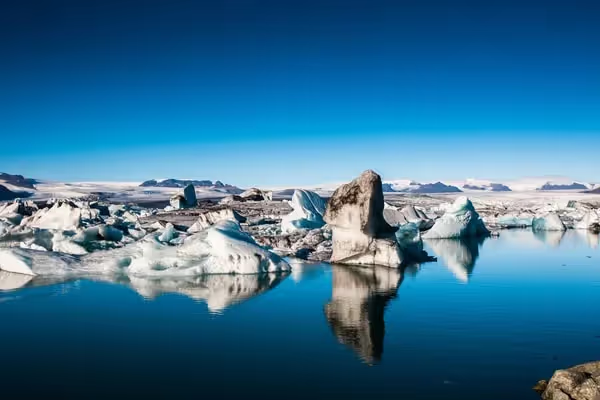
Jökulsárlón glacier lagoon stands as one of Iceland’s most iconic attractions, where massive icebergs calve from the retreating Breiðamerkurjökull glacier tongue into a deep lagoon. At 284 meters deep, this represents Iceland’s deepest lake, with icebergs slowly drifting toward the ocean while providing dramatic foreground elements for photography.
The lagoon’s size varies seasonally but averages about 18 square kilometers, offering boat tours that navigate between towering ice formations. Wildlife viewing opportunities include seals resting on ice floes and various seabirds, while the constantly changing ice sculptures ensure each visit presents unique scenes.
Vatnajökull national park encompasses Europe’s largest glacier, covering approximately 8,100 square kilometers or roughly 8% of Iceland’s total landmass. The park offers glacier hiking opportunities, ice climbing experiences, and super jeep tours that access remote glacial areas impossible to reach in standard vehicles.
Accessible outlet glaciers like Sólheimajökull provide opportunities for guided glacier hike experiences without requiring extensive mountaineering skills. These tours offer insights into glacial formation, climate change impacts, and the dynamic nature of Iceland’s ice, making complex geological processes tangible for visitors.
Time Requirements and Logistics
Understanding time requirements proves crucial for choosing between these routes. The golden circle’s compact design allows completion in 8-9 hours including travel time from Reykjavik, making it perfect for travelers with just one day available for sightseeing. This timing includes stops at all three major attractions plus potential detours to secondary sites like the secret lagoon or Kerið crater.
South coast exploration demands significantly more time investment. A basic day tour reaching Vík and reynisfjara black sand beach requires 10-12 hours of travel time, while extended trips to jökulsárlón glacier lagoon stretch to 14-16 hours. These marathon day tours often leave travelers exhausted and provide insufficient time to properly appreciate each attraction.
For optimal south coast exploration, plan two days minimum with an overnight stay in Vík or the Skaftafell area. This approach allows early start times for glacier activities, reduces driving fatigue, and provides opportunities for evening northern lights viewing during appropriate seasons.
Driving distances illustrate the scale difference: the complete golden circle loop covers approximately 300 kilometers, while reaching Jökulsárlón from Reykjavik involves 370 kilometers each direction along the ring road. These distances don’t account for additional time spent accessing specific attractions or dealing with weather-related delays.
Transportation Options
Self-driving provides maximum flexibility for both routes, allowing travelers to create their own itinerary and spend desired time at each attraction. All major attractions on both routes are accessible via paved roads, though 4WD vehicles are recommended for accessing glacier areas or during winter conditions when weather can deteriorate rapidly.
Small group tours (8-19 people) offer balanced experiences with knowledgeable guides providing geological and historical context while maintaining reasonable group sizes for personalized attention. These tours typically cost more than large coach alternatives but provide superior experiences through expert commentary and flexible timing.
Large coach tours represent the most budget-friendly option but sacrifice flexibility and personal attention. These tours follow rigid schedules with predetermined stops and limited time at each attraction, making them suitable for budget-conscious travelers willing to accept less customization.
Private tours deliver ultimate flexibility and personalized experiences but command premium pricing. These work particularly well for families, special occasions, or travelers with specific interests requiring customized itineraries beyond standard tour offerings.
Accommodation Bases
Reykjavik serves as the natural base for golden circle exploration, offering the widest selection of accommodations, restaurants, and services. The city’s proximity to the route’s starting point makes early departures convenient while providing evening entertainment options after returning from day trips.
For those seeking closer proximity to golden circle attractions, Selfoss and the Geysir area offer rural accommodations that reduce driving time and provide opportunities for evening visits to attractions when crowds thin. These locations work particularly well for photographers seeking optimal lighting conditions.
Vík represents the ideal south coast base for travelers planning multi-day exploration. This charming coastal village (population 300+) offers numerous guesthouses and hotels while positioning visitors centrally between major south coast attractions. The town’s location allows easy access to Reynisfjara, while serving as a launching point for glacier activities further east.
Skaftafell and Höfn provide access to iceland’s largest glacial areas and jokulsarlon glacier lagoon. These locations work best for travelers prioritizing glacier experiences and willing to sacrifice some convenience for proximity to ice-based activities and remote natural areas.
Best Time to Visit
Summer months (June-August) offer optimal conditions for both routes with up to 20+ hours of daylight, mild temperatures averaging 10-15°C, and the best road conditions. All attractions remain accessible, though this period brings the heaviest crowds and highest accommodation prices. The midnight sun effect provides extended photography opportunities but can disrupt sleep patterns.
Spring (March-May) presents excellent value with increasing daylight hours, fewer crowds, and shoulder season pricing. Late May brings spectacular lupine wildflower blooms along the south coast, creating purple carpets across lava fields. Weather remains variable with potential for sudden changes.
Autumn (September-November) marks the beginning of northern lights season while offering fall foliage in sheltered areas. This period requires more flexible planning due to increasing wind and rain, but provides opportunities for dramatic storm photography along the coast.
Winter (December-February) transforms both routes through limited daylight (4-6 hours midwinter) but enables ice cave exploration and prime northern lights viewing. This season demands careful planning, winter driving experience, and flexible itineraries due to potential weather-related road closures, especially affecting south coast travel.
Budget Considerations
Golden circle group tours range from €50-80 per person for basic packages, while private tours command €200-400 depending on group size and customization level. These prices typically include transportation and guide services but exclude meals and optional activities like the secret lagoon entrance.
South coast pricing varies significantly based on destinations included. Basic tours to Vík cost €70-120 per person, while extended trips including jökulsárlón glacier lagoon range from €150-200. Glacier hiking and ice cave tours require additional fees typically ranging €100-150 per person.
Self-driving offers potential savings when costs are split among multiple travelers. Car rental averages €40-80 daily for economy vehicles, with fuel costs approximately €100-150 for either route (unleaded petrol costs about €2.30 per liter). This option becomes increasingly economical for groups of 3-4 people.
Accommodation costs vary by location and season. Reykjavik hotels range €80-200 per night, while countryside guesthouses typically cost €60-120. Budget travelers can find hostel accommodations starting around €30-50 per night, though availability becomes limited outside Reykjavik.
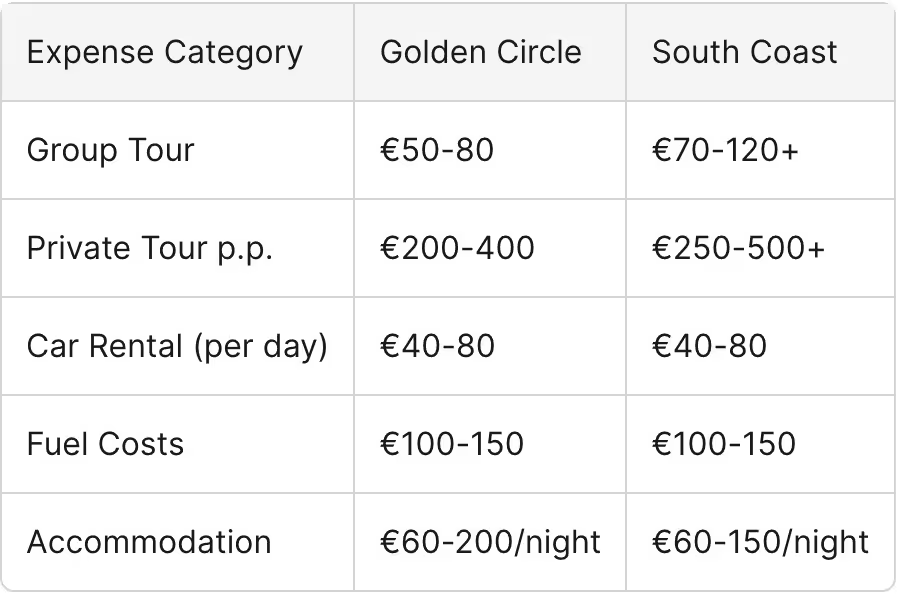
Which Route Should You Choose?
Choose the golden circle if you have limited time in iceland, prefer geological and historical attractions, or want manageable day trips from Reykjavik. This route suits first-time visitors seeking Iceland’s “greatest hits” in a compact format, families with children who might struggle with longer travel days, or travelers prioritizing convenience and accessibility.
The golden circle excels for visitors interested in Iceland’s unique position on the Mid-Atlantic Ridge, geothermal phenomena, and early parliamentary history. Its compact nature allows thorough exploration without rushing, while excellent infrastructure ensures comfortable experiences regardless of weather conditions.
Select the south coast for diverse landscapes, dramatic coastal scenery, and glacier experiences. This route appeals to nature photographers seeking varied compositions, hikers wanting extended trail options, and travelers willing to invest more time for greater landscape diversity.
The south coast rewards visitors seeking iceland’s raw natural power through thundering waterfalls, volcanic beaches, and massive glacial formations. Its linear nature provides constantly changing scenery, while the variety of attractions ensures something compelling for every type of traveler.
Consider combining both routes over 4-5 days for a comprehensive iceland experience that showcases the country’s full geological and cultural spectrum. This approach allows proper exploration of each route’s unique characteristics while reducing travel fatigue through strategic overnight positioning.
For travelers with extremely limited time (single day available), the golden circle provides more concentrated experiences with higher return on time investment. Those with 2-3 days should seriously consider the south coast’s superior landscape diversity and glacier access opportunities.

.webp)
